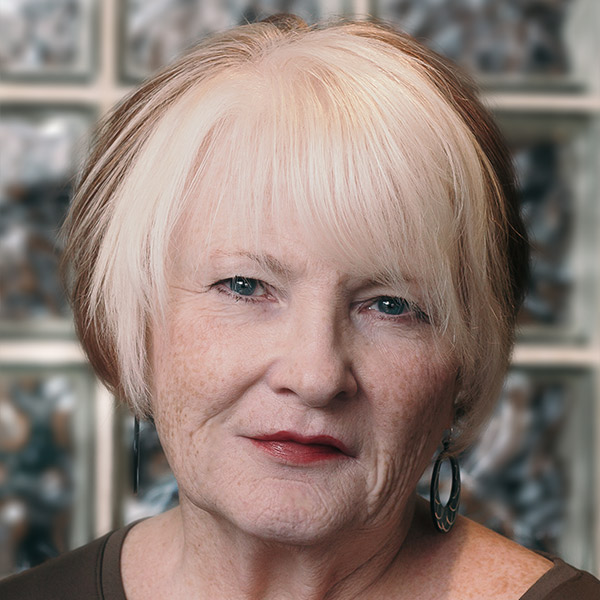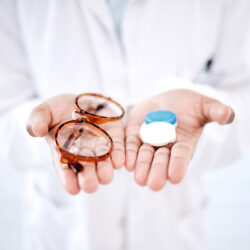I met with my primary care physician this week to review the results of a blood test. The visit was routine…except that I was barefoot and one of my cats gave my big toe a thorough washing while my doc and I chatted about my cholesterol numbers. It was my first experience with telemedicine, where a patient video-conferences with a healthcare provider from the comfort of home, shoes are optional and interference by pets is no big deal.
Telemedicine uses a smartphone, tablet or computer to connect a patient with a healthcare provider.
Many doctor’s offices, like mine, offer this service during regular business hours in place of certain types of in-person visits. There are also telemedicine services that give a patient access to a healthcare provider 24 hours a day, seven days a week and 365 days a year. More on that in a minute.
Let’s break down why telemedicine is so popular and how it works.
1. The pandemic launched telemedicine into the stratosphere.
Unless you’ve been camped out on the dark side of the Moon since early 2020, you know that the COVID-19 pandemic has drastically altered face-to-face interactions with just any human outside of one’s housemates. When the coronavirus shut down the country early last spring, people stopped visiting their doctors for preventive care, tests, or even treatment for chronic diseases and sudden illnesses. Who wants to sit in a waiting room with sick people when a deadly pathogen is floating through the air? Like nobody ever.
This hesitancy for face-to-face medical visits was a gut punch to U.S. physicians in private practices who reported steep declines in revenues.1 (My doctor had to furlough several employees, including front-office staff, nurses and physician’s assistants). To treat their patients and keep their practices afloat, doctors’ offices quickly cobbled together a virtual solution. Many employers, mine included, also added the 24/7 telemedicine option to their employee benefits programs, and a trend was born.
See how patients have quickly embraced telemedicine: In 2019, only 11% of Americans used it. In 2020 so far, the number is 46%.2
2. Telemedicine works for a wide variety of medical care.
A virtual visit can be used for a long list of care that doesn’t require the doctor to be in a treatment room with the patient. Clearly, it won’t work for detailed physical exams (like an annual well-woman visit) or diagnostic testing (think x-rays or an EEG).
My recent bloodwork review is a prime example of a consultation that translates easily to telemedicine. Here are other types of conditions that can be addressed in a virtual setting:3
- Allergies
- Arthritis Pain
- Asthma
- Bronchitis
- Colds and Flu
- Conjunctivitis
- Diabetes Management
- Diarrhea
- Fever
- Rx Questions, Adjustments & Refills
- Pink Eye
- Rashes
- Sinus Problems
- Sore Throat
- Substance Abuse, Mental & Behavioral Health
- Urinary Tract Infection
- Vomiting
- Weight Loss and Wellness
Also, if a patient isn’t sure whether an illness or injury requires a trip to an in-person healthcare provider or even an emergency room, a telemedicine consultation can determine if more aggressive care is needed. Early in the pandemic when ERs were overrun with COVID-19 patients, many doctors used virtual visits to determine if individuals with coronavirus symptoms required hospitalization.
3. In addition to a virtual visit with a primary care doctor during regular office hours, there are options for 24/7 healthcare.
What happens if treatment is needed when a medical office is closed? One of my friends developed a painful urinary tract infection and a fever on a Saturday night. Because COVID-19 was rampant in her town, she didn’t feel safe going to the emergency room or using urgent care, and she was in too much pain to wait for help until her doctor’s office opened on Monday. She remembered she had access to a service called Teledoc through her employer’s healthcare benefits program. She registered with Teledoc, provided a phone number and in about 15 minutes was talking to a board certified physician. Because my friend had a previous UTI that was successfully treated by a specific antibiotic prescribed by her regular doctor, the Teladoc physician agreed to prescribe the same medication for the current infection. He sent the prescription to a national chain drugstore near my friend’s house and she was able to pick it up the next morning. The copay for the telemedicine visit was the same as what she would have paid at her doctor’s office, and far less expensive than if she’d used the emergency room.
Check now to see if you have coverage with a third-party service that provides access to 24/7 care. Your employer’s HR team or your health insurance carrier is the place to start, or if your health insurance provides an advocacy service, you can check there. While you’re at it, ask what the copayment is and which health services are typically covered.
If you’re insured by the U.S. public health exchange called healthcare.gov, click on the link in footnote 4 to read about the availability of telemedicine.4 If you’re insured through a state healthcare exchange, visit that website to learn about telemedicine options. If you have no health insurance, you can search online for telemedicine providers. Here are examples I found.
4. Are you ready, technology wise, for a virtual visit?
A computer, tablet or smartphone is best for a telemedicine visit. Here’s a checklist5 to help you prepare:
- Get to know your device’s webcam. Virtual visits work best when your doctor can clearly see you. Cell phones, tablets and many computers have built-in cameras, also called webcams. Test your device’s sound by doing a call or video chat with a friend. Set the webcam at eye level. Can the other person see and hear you? Do you need to talk more loudly or get closer to the microphone or camera?
- Tell your doc how you want to be notified when a virtual visit is about to begin. Most telemedicine technology, whether through the doctor’s office or through a third-party service like Teledoc, provides a notification system to let you know when your doctor is ready for the visit. When you make the appointment, you will likely be asked how you prefer to receive this notification; email, phone call or text are the usual options.
- Prepare for the virtual visit.
- Find a quiet place where you won’t be interrupted.
- Plug in your device to avoid losing power in the middle of the virtual visit.
- Make sure your webcam is working by testing it before the visit.
- Turn on the microphone.
- Adjust the lighting by turning on overhead lights and blocking light from windows.
- Before the meeting, write down questions you want to discuss.
- While you’re at it, write down your doctor’s phone number in case you get disconnected.
5. Telemedicine is likely here to stay.
Patients are embracing the idea that telemedicine is super convenient. In one study, 93% of respondents said they would use telemedicine to manage prescriptions, and 91% said telemedicine would help them attend appointments, manage prescriptions and refills, and follow wellness regimens prescribed by a doctor.6 Research shows that virtual care will outlast the COVID-19 pandemic.
6. Stuff sometimes happens with technology. Flexibility is key.
During a virtual visit between my husband and our doctor a few months ago, the video froze and the connection was lost. The doc called back and they completed their consultation on the phone, but without the webcam. No big deal.
Things can get weird from the doctor’s point of view. During my recent appointment I couldn’t resist asking him about the most unusual virtual visit he’d conducted. He replied that the patient, a mom of a newborn, suddenly announced that she had to change the baby’s diaper. She propped her smartphone on the changing table, facing the business end of the diaper, while she continued to video chat with the doctor.
“Ewww,” I said, and we both laughed.
2McKinsey & Company, “Telehealth: A Quarter-Trillion-Dollar COVID-19 Reality?”
3eVisit, “What is Telemedicine?”
4telehealth.hhs.gov, “Telehealth: Healthcare from the Safety of Our Homes”
5eVisit, “How to Do a Telemedicine Call the Right Way”
6Medicaleconomics.com, “Four New Statistics That Prove That Telemedicine Isn’t Just a Pandemic Fad”
MORE RESOURCES
Be a Savvy Healthcare Consumer
INFOGRAPHIC: Are you Making Costly Insurance Benefits Mistakes?














